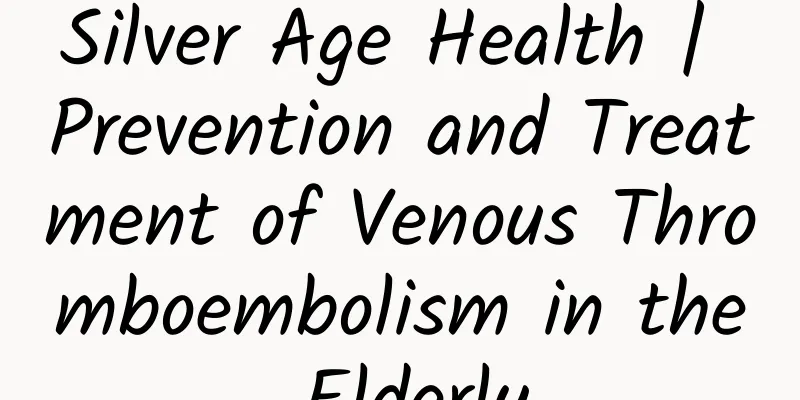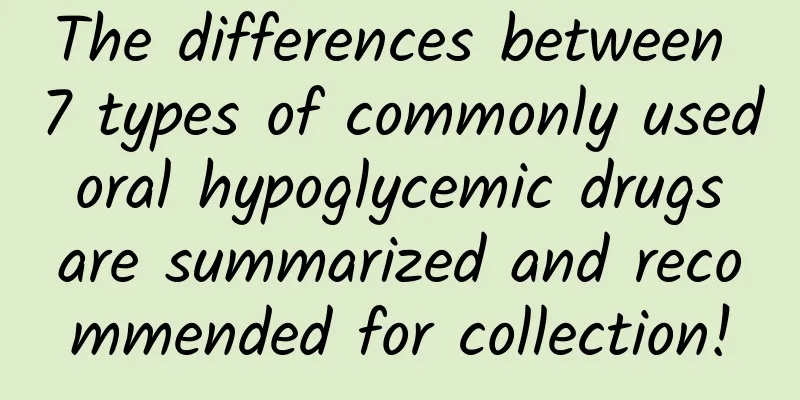Silver Age Health | Prevention and Treatment of Venous Thromboembolism in the Elderly

|
Venous thromboembolism (VTE) is a complex disease consisting of deep vein thrombosis (DVT) and pulmonary embolism (PE). In young people, the annual growth rate of VTE is relatively low, about 1‰; however, with age, this growth rate increases significantly in the elderly population, reaching 6‰ to 8‰. It is worth noting that approximately 60% of VTE occurs in the elderly population over 65 years old, and this proportion is still increasing with age. This means that age is an important risk factor that requires our special attention. ▏Epidemiology and risk factors of venous thromboembolism in the elderly 1. Epidemiological characteristics of venous thromboembolism in the elderly: 1. The incidence of venous thrombosis in the elderly population. At present, there are few studies on the incidence of venous thromboembolism in large populations in China, while large sample data from abroad show that the annual incidence of venous thrombosis in the European population is between 1.04‰ and 1.83‰. However, the incidence of venous thrombosis in my country has increased year by year, from 0.28‰ in 2004 to 0.48‰ in 2016. It is worth noting that the incidence of venous thromboembolism increases exponentially with age. The annual incidence in people aged 50 is less than 1‰, while the annual incidence in people over 80 is as high as 6‰ to 8‰. In addition, the incidence of venous thrombosis in the elderly over 75 years old is 7 to 10 times that of adults under 50 years old. 2. Mortality rate of elderly patients with venous thromboembolism. Previous data showed that the 30-day and 1-year mortality rates of venous thromboembolism in the elderly were 10.6% and 23.0%, respectively. However, since only some deaths were correctly diagnosed before death, in fact, after combining autopsy data, the 30-day mortality rate of venous thromboembolism in the elderly population may be as high as 30%, and most of the causes of death are pulmonary embolism. In a multicenter study in my country, although the mortality rate of venous thromboembolism decreased after the implementation of the National Venous Thromboembolism Prevention and Treatment Program (NCPPT), it still remained at a high level of 8.7%. Even so, the proportion of pulmonary embolism and related mortality in elderly venous thromboembolism are still significantly higher than those in younger patients. 2. Risk factors for venous thromboembolism in the elderly In recent years, advanced age has been widely recognized as an independent risk factor for venous thromboembolism. As they age, the elderly may accumulate multiple risk factors, thereby increasing their risk of venous thromboembolism. In elderly patients, several different risk factors can usually be identified: 1. Changes in blood vessels and coagulation function caused by aging. With age, the blood vessel wall gradually ages, the collagen content increases, and the disorder and rupture of elastin lead to spontaneous endothelial damage, which may be one of the reasons for the high incidence of venous thromboembolism in the elderly. 2. Trauma, surgery and immobilization. These factors may lead to vascular damage, activation of the coagulation system and slowing of lower extremity venous blood flow under immobilization, which are important risk factors for venous thromboembolism. Thrombosis often occurs under various immobilization conditions, such as various traumas, post-surgery, serious illness in bed, fractures, disability, long-term wheelchair use, etc. Due to osteoporosis, malignant tumors and other reasons, the elderly are more susceptible to high-risk factors such as fractures, trauma, surgery, etc. that cause thrombosis, and are therefore more likely to suffer from venous thromboembolism. 3. With the increase of age, the incidence of basic medical diseases and malignant tumors also increases, and these diseases are closely related to the occurrence of thrombosis. Therefore, inpatients of internal medicine, especially elderly patients, should be regarded as a high-risk group for venous thromboembolism. At the same time, the relationship between malignant tumors and thrombosis is complex and close. Venous thromboembolism is not only a common complication of tumor patients, but sometimes it may also be a sign and signal of occult tumors. Especially for elderly tumor patients, special attention should be paid. ▏Risk assessment of venous thromboembolism in the elderly The risk of venous thromboembolism increases significantly with age. Due to various basic problems, the elderly may further increase the possibility of thrombosis. Malignant tumors are often in a hypercoagulable state. About 19% to 30% of patients with venous thromboembolism have malignant tumors. It is not uncommon for elderly patients with venous thromboembolism to have malignant tumors and occult cancer. Tumor surgery and chemotherapy are also high-risk factors for venous thromboembolism. There is a significant linear relationship between high body mass index (BMI) and the occurrence of venous thromboembolism in the elderly. The risk of thrombosis in obese elderly people is more than 2 times that of non-obese elderly people. Other risk factors for venous thromboembolism in the elderly include a history of thrombosis, prolonged immobilization or bed rest, thrombophilia, recent trauma, surgery, acute myocardial infarction, acute ischemic stroke, acute infectious diseases, rheumatic diseases, inflammatory bowel disease, diabetes, and hormone therapy. my country has entered an aging society with a large elderly population, including hospitalized elderly patients and ordinary elderly people at home and in nursing homes, who are all high-risk groups for venous thromboembolism. Therefore, it needs to attract widespread attention and attention from the whole society. It is urgent to develop a simple and effective risk assessment model that can not only perform specific risk scores on the elderly, but also effectively screen out high-risk groups for venous thromboembolism through early warning of risk factors, so as to formulate corresponding preventive measures, referral recommendations or further examinations and tests. This will effectively improve the prevention and treatment efficiency of venous thromboembolism and reduce the social and medical burden. ▏Clinical manifestations of venous thromboembolism in the elderly 1. Deep vein thrombosis (DVT) is common in the lower limbs of the elderly, with mild symptoms. Patients over 80 years old often have no typical symptoms. People who are hospitalized, bedridden, wheelchair-bound, and disabled are at high risk of acute DVT. The main symptoms include limb swelling, pain, increased tension, and some patients may also feel heaviness in the lower limbs. However, the elderly have decreased sensory function and walk less, so these symptoms are usually milder than those in young people. During physical examination, redness of the limb skin, dilated veins, increased skin temperature, and tenderness along the site of venous thrombosis may be found. If the thrombus is located in the intermuscular venous plexus of the calf, the relevant examination is often positive. Patients with severe lower extremity deep vein thrombosis may experience extreme limb tension and ischemia. Post-deep vein thrombosis syndrome may occur in the chronic stage, mainly manifested by postural swelling and pain, and physical signs include edema in the ankle area, pigmentation, eczema, varicose veins, and even skin sclerosis and ulcers in severe cases. 2. Pulmonary embolism Pulmonary embolism is a common acute disease in the elderly, and its clinical manifestations are closely related to the size of the thrombus, the site of obstruction and the patient's basic condition. Compared with younger patients, the symptoms and signs of pulmonary embolism in the elderly are often atypical. Typical symptoms such as chest pain, hemoptysis and dyspnea are relatively rare, while symptoms and signs such as syncope and lung rales are more common. In terms of physical signs, there is no significant difference between elderly patients with pulmonary embolism and non-elderly patients. Common signs include fever, rapid breathing, increased heart rate, etc. Pulmonary embolism that is not properly treated can cause chronic pulmonary hypertension and should be taken seriously. Some common symptoms may include: - Shortness of breath or fatigue after exertion, which may indicate that the heart is overloaded. - Dyspnea, chest tightness and chest pain may also be related to heart problems. - Lower limb edema may indicate impaired heart function and fluid accumulation in the legs. - Inability to lie flat at night may be due to dyspnea caused by pulmonary congestion or heart problems. Additionally, if you have pulmonary hypertension in the elderly, a resting pulmonary artery pressure greater than 25 mmHg may affect right heart function and lead to heart failure. Keep in mind that these symptoms can be part of many different diseases, and if you have any concerns, it is best to consult a doctor or medical professional for a proper diagnosis and treatment recommendations. In some cases, these symptoms may be early signs of a serious illness that requires immediate attention and appropriate treatment. ▏Pharmacological treatment of venous thromboembolism in the elderly 1. Anticoagulant therapy Since the elderly often have multiple diseases, they are not clearly representative in various studies of venous thromboembolism. Therefore, the best treatment for venous thromboembolism in the elderly and the duration of anticoagulation have not yet been clarified. Data show that about 30% of elderly patients with venous thromboembolism are excluded in clinical studies of vitamin K antagonists. This is mainly because they have a 2-fold increased risk of bleeding compared to those who are not excluded. Although the existing guidelines do not make special recommendations for specific regimens and anticoagulation times for the elderly, the guidelines still take age factors into account and believe that patients with no obvious inducements and a high risk of bleeding do not need to undergo excessively long anticoagulant treatment. 2. Thrombolytic therapy is still controversial in elderly patients with pulmonary embolism. Since elderly patients have a higher risk of bleeding, systemic thrombolysis cannot be used as the first choice of treatment. Pressure therapy for venous thromboembolism in the elderly includes elastic bandages, gradient pressure stockings, etc. These treatments can effectively relieve symptoms and prevent thrombosis from worsening. 3. Intracavitary treatment of venous thromboembolism in the elderly at home should be selected after individualized evaluation based on the location of thrombus involvement, severity of clinical manifestations, time of thrombus formation, etc. Elderly people outside hospitals (at home, nursing homes, communities, etc.) are an important part of the prevention and treatment of venous thromboembolism. Information management of thrombosis prevention and treatment for this population is particularly important at home, in nursing homes, and in non-hospitalized settings. In summary, the elderly, especially those living at home, in nursing homes, and in non-hospitalized elderly people, are a vulnerable population for the prevention and treatment of venous thromboembolism. They have a higher prevalence and high-risk pathogenic factors, so we need to strengthen the prevention and treatment of this population and improve their health level. At present, there is insufficient evidence or basis for the prevention and treatment of thrombosis in this population. The diagnosis and treatment of venous thromboembolism in the elderly population refer to most relevant domestic and international guidelines and consensus for hospitalized elderly people. We hope that this knowledge can help the prevention and treatment of thrombosis in hospitalized and non-hospitalized elderly people, especially in standardizing the prevention and treatment of venous thromboembolism in non-hospitalized elderly people. Our goal is to provide guidance and suggestions for improving the quality of life and survival of the elderly. However, further research and exploration are still needed to provide more specific and targeted prevention and treatment strategies. ▏References 1. Elderly patients with acute venous thromboembolism should actively seek relevant risk factors, including removable and non-removable ones. This includes removable risk factors such as surgery, trauma, fracture, acute medical disease, immobilization, and non-removable risk factors such as malignant tumors, antiphospholipid antibody syndrome, inflammatory bowel disease, and nephrotic syndrome. 2. For elderly patients with venous thromboembolism without obvious predisposing factors, gender-specific malignant tumor screening is recommended rather than routine broad screening, and routine thrombophilia testing is especially not recommended. 3. For elderly patients with familial venous thromboembolism and no definite reversible predisposing factors, thrombophilia screening is recommended. 4. According to the risk level of venous thromboembolism in elderly patients, the prevention measures for the elderly population with low risk of thrombosis are mainly health education and encouragement of activities, and mechanical prevention can also be selected. For the elderly population with medium or high risk of thrombosis, if there are contraindications to anticoagulation, mechanical prevention alone is recommended; for the elderly population with high risk of thrombosis, if there are no contraindications to the use of anticoagulants, mechanical prevention combined with drug prevention is recommended. 5. Basic prevention is the most basic method to prevent venous thromboembolism. A reasonable diet is the key to basic prevention: (1) Eat more seasonal vegetables, beans, whole wheat flour and other foods rich in dietary fiber to keep bowel movements smooth. (2) Drink more water, about 1500 ml per day. Patients with heart disease and kidney disease should reduce their water intake appropriately. (3) Increasing exercise is another effective preventive measure, and ankle pump exercise is one of them. For some contraindications, such as extremely poor general condition and unstable condition; unstable ankle joints or unhealed ankle fractures without internal fixation; and elderly people with bone and joint tumors, avoid exercises that may disrupt the healing process and cause new injuries, pain or increased inflammation. (4) Smoking is a risk factor for venous thromboembolism and should be quit. (5) Standing or sitting for long periods of time, or sitting in an improper posture, and wearing comfortable shoes and socks are also important ways to prevent venous thromboembolism. In general, for elderly patients with acute venous thromboembolism, relevant risk factors should be actively sought and controlled. For elderly patients without obvious predisposing factors, appropriate screening and prevention measures should be formulated according to individual circumstances. For elderly patients with a family history or specific risks, targeted thrombophilia screening should be performed. In terms of prevention methods, appropriate methods should be selected according to the patient's risk level, such as health education, encouraging activities, mechanical prevention, etc. For high-risk patients, the combined use of mechanical prevention and drug prevention should be considered. Author | Han Mei was born in Dunhua City, Jilin Province. She is a practicing pharmacist and has worked in a well-known national tertiary hospital for more than 30 years. She has rich medical care experience. She has represented the hospital to go out for exchanges and study many times. She is an expert in food hygiene and nutrition, has a national nutritionist qualification, and is a science enthusiast. |
<<: [Popular Science] If you have the flu, does drinking electrolyte water help?
>>: Tossing and turning when sleeping VS staying still, which is healthier?
Recommend
They are all mung bean soups, but why are some red and some green? Which one is better?
It is the dog days of summer, and mung bean soup ...
What's going on with the hard bulge on my vulva?
There is a bulge in the vulva, which feels hard t...
Diseases start from the feet. Three major reasons for irregular menstruation in women
Menstrual disorders are also called irregular men...
Will taking birth control pills delay menstruation?
Contraceptive pills are the emergency medicine fo...
Detailed manifestations of female menopausal syndrome
Women will slowly enter menopause after reaching ...
The second line of the pregnancy test stick is very light in color
When female friends do not have normal menstrual ...
How is the baby developing in the 21st week of pregnancy?
For female friends, the pregnancy reaction after ...
What does heavy menstrual blood mean?
Menstruation is a physiological cycle of natural ...
My breasts feel like lumps.
A woman's breasts are a very critical part be...
Pregnant women drink these 7 kinds of tea
Tea is a good thing. On a hot summer day, a cup o...
How can I get pregnant if the follicles are not developing well?
The follicles play a vital role in our difficult ...
What can pregnant women eat to stop diarrhea immediately?
Pregnancy is a special stage. The gastrointestina...
Why is the woman's face dark yellow?
Women's skin should be white, rosy, tender an...
Is it normal to have menstruation 15 days after medical abortion?
After medical abortion, a woman's uterus need...
How to store pears in summer? Can any pear be made into rock sugar snow pear?
Pears are known as the king of fruits. Pears are ...









